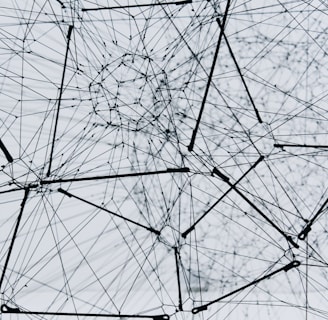Understanding Neural Networks: The Building Blocks of AI and Machine Learning
"In the tapestry of tomorrow, AI and machine learning are the threads weaving together the fabric of progress and advancement."
ARTIFICIAL INTELLIGENCEMACHINE LEARNINGGNN
Greetings, fellow learners, and welcome to an enlightening journey into the intricate world of Neural Networks – the fundamental building blocks of Artificial Intelligence (AI) and Machine Learning (ML). In this comprehensive exploration, we'll unravel the mysteries of neural networks, from their inception to their transformative impact on the landscape of modern technology. So, fasten your neural synapses, and let's embark on this exhilarating voyage of discovery.
1. The Neural Network Paradigm:
At its core, a neural network mimics the structure and functionality of the human brain, comprising interconnected nodes (neurons) organized into layers.
Through a process of learning from data, neural networks can recognize patterns, make predictions, and perform complex tasks with remarkable accuracy and efficiency.
2. From Perceptrons to Deep Learning:
The journey of neural networks begins with the humble perceptron – a basic model capable of binary classification.
Over time, researchers developed more sophisticated architectures, leading to the emergence of Deep Learning – a paradigm where neural networks with multiple layers (deep neural networks) excel at tackling complex problems across various domains.
3. Unraveling the Layers:
A typical neural network consists of three main types of layers: input layer, hidden layers, and output layer.
Each layer contains multiple neurons that process and transform data through weighted connections, with activation functions adding non-linearity to the network's computations.
4. Training and Optimization:
The magic of neural networks lies in their ability to learn from data through a process known as training.
During training, the network adjusts its weights and biases based on the input data and desired output, gradually improving its performance through iterative optimization algorithms like gradient descent.
5. Convolutional Neural Networks (CNNs):
CNNs are specialized neural networks designed for processing structured grid-like data, such as images.
By leveraging convolutional layers and pooling operations, CNNs excel at tasks like image recognition, object detection, and image segmentation.
6. Recurrent Neural Networks (RNNs):
RNNs are tailored for sequential data processing, making them ideal for tasks like natural language processing (NLP) and time series prediction.
With feedback loops that allow information to persist over time, RNNs can capture temporal dependencies and context in sequential data.
7. Beyond Supervised Learning:
While supervised learning remains the dominant paradigm for training neural networks, other learning methods like unsupervised learning and reinforcement learning offer alternative approaches.
Unsupervised learning algorithms, such as autoencoders and generative adversarial networks (GANs), enable neural networks to learn from unlabeled data and discover underlying patterns autonomously.
As we delve deeper into the intricate workings of neural networks, it becomes apparent that their potential knows no bounds. From image recognition to natural language understanding, and beyond, neural networks have become indispensable tools in the AI and ML toolkit.
So, fellow learners, let's embrace the complexity, marvel at the elegance, and unlock the true potential of neural networks in reshaping the future of technology. With understanding as our compass and curiosity as our guide, the journey ahead promises to be nothing short of extraordinary.
Until next time, may your neurons fire brightly, your gradients converge smoothly, and your insights illuminate the path to AI enlightenment.




